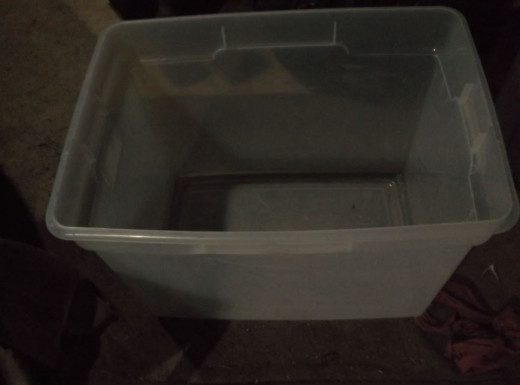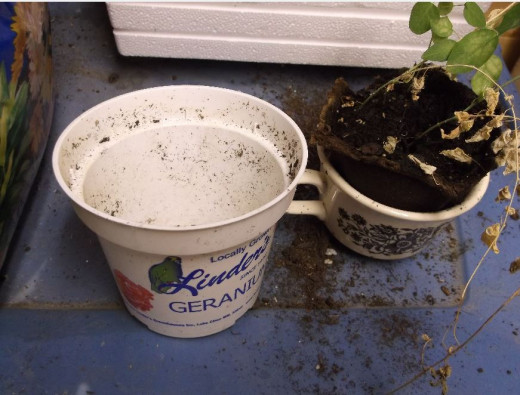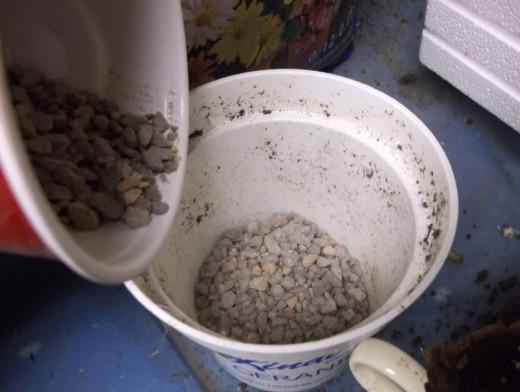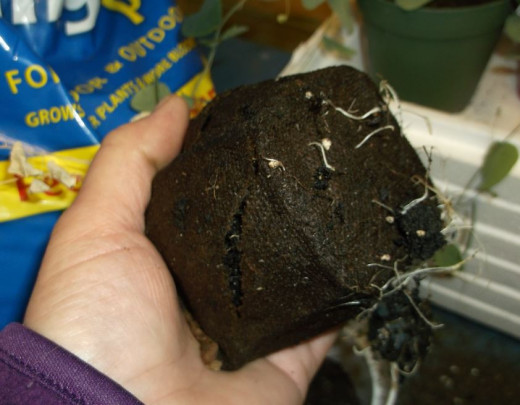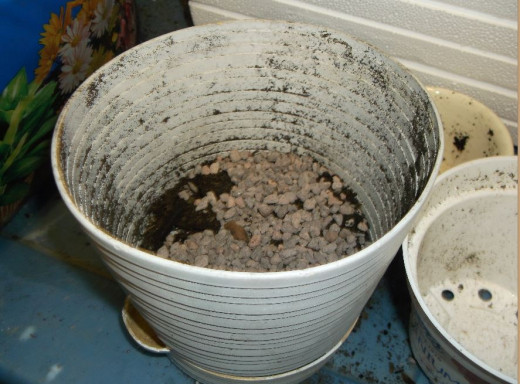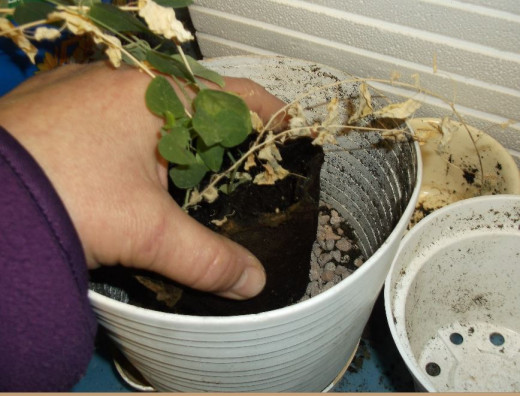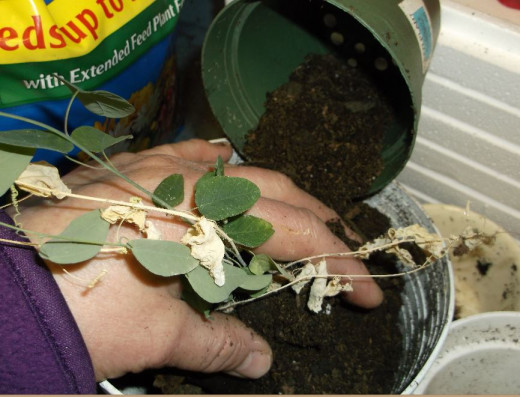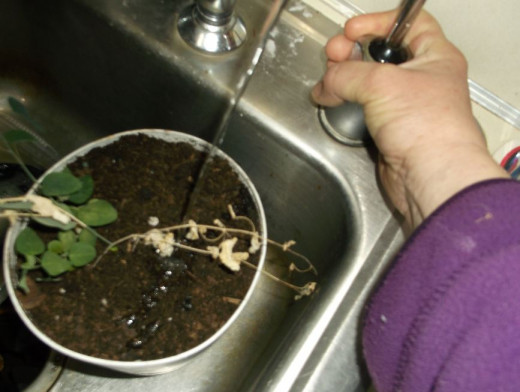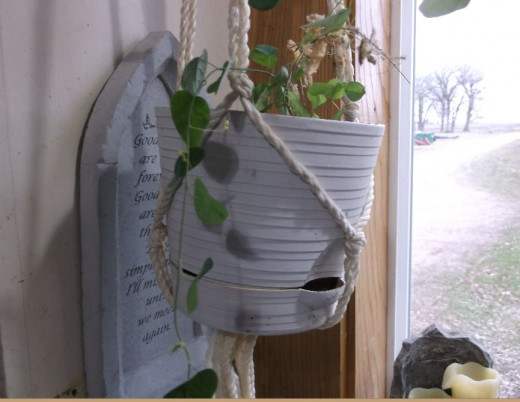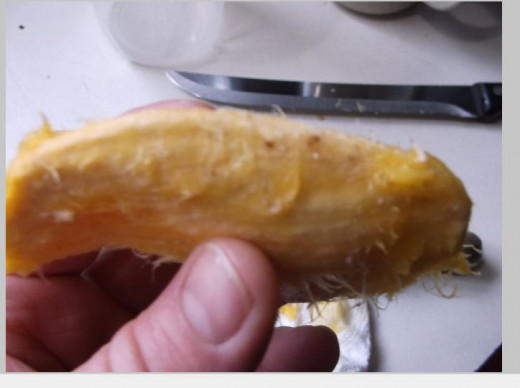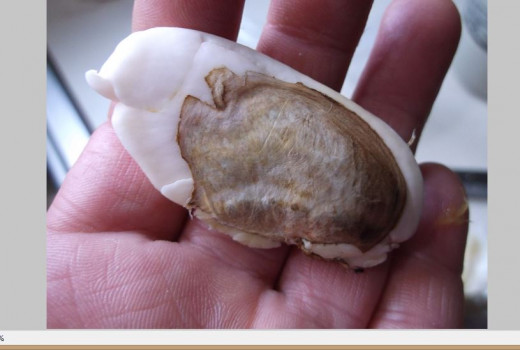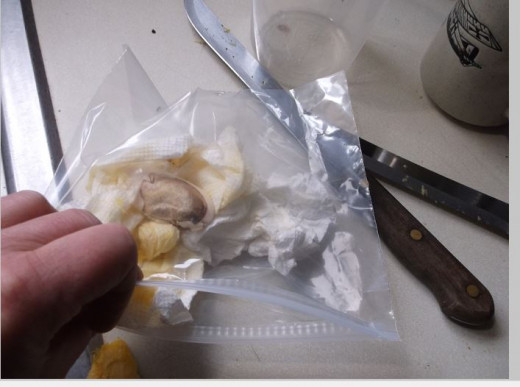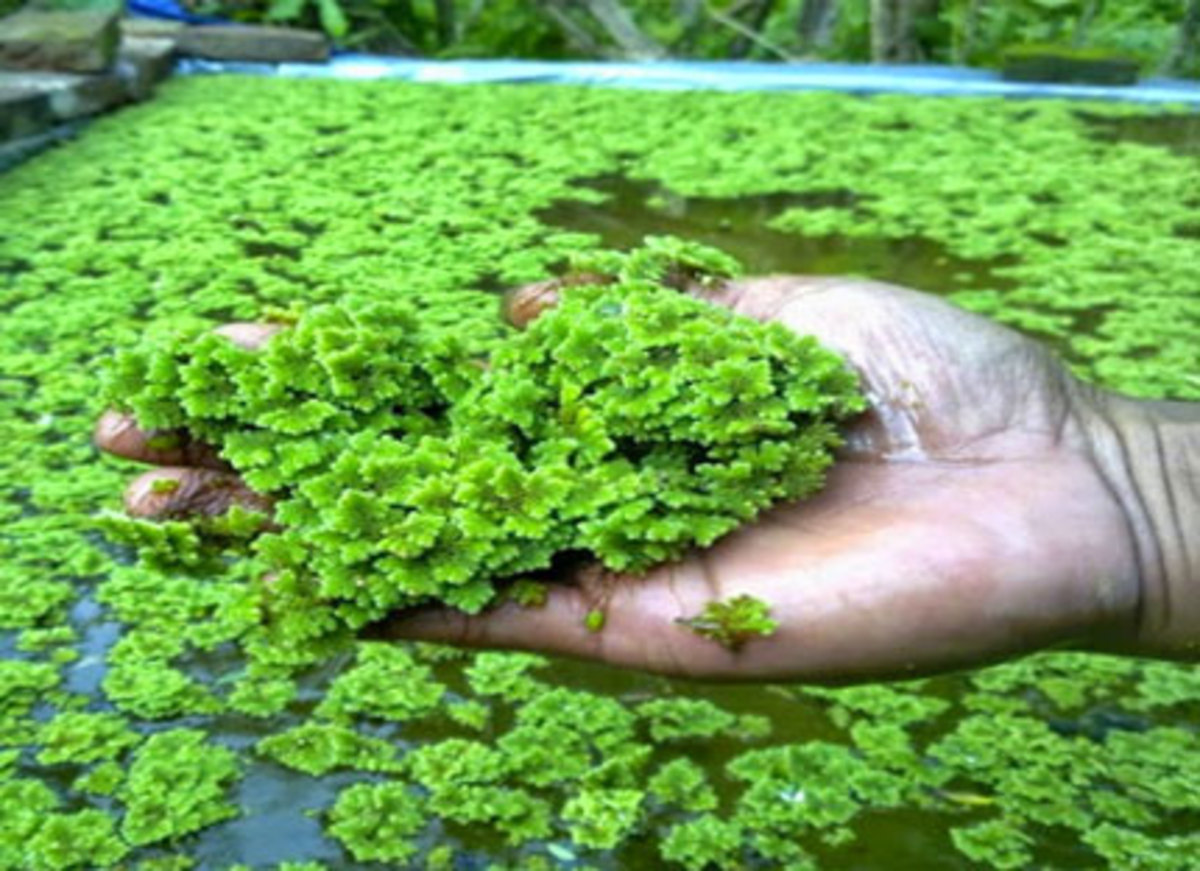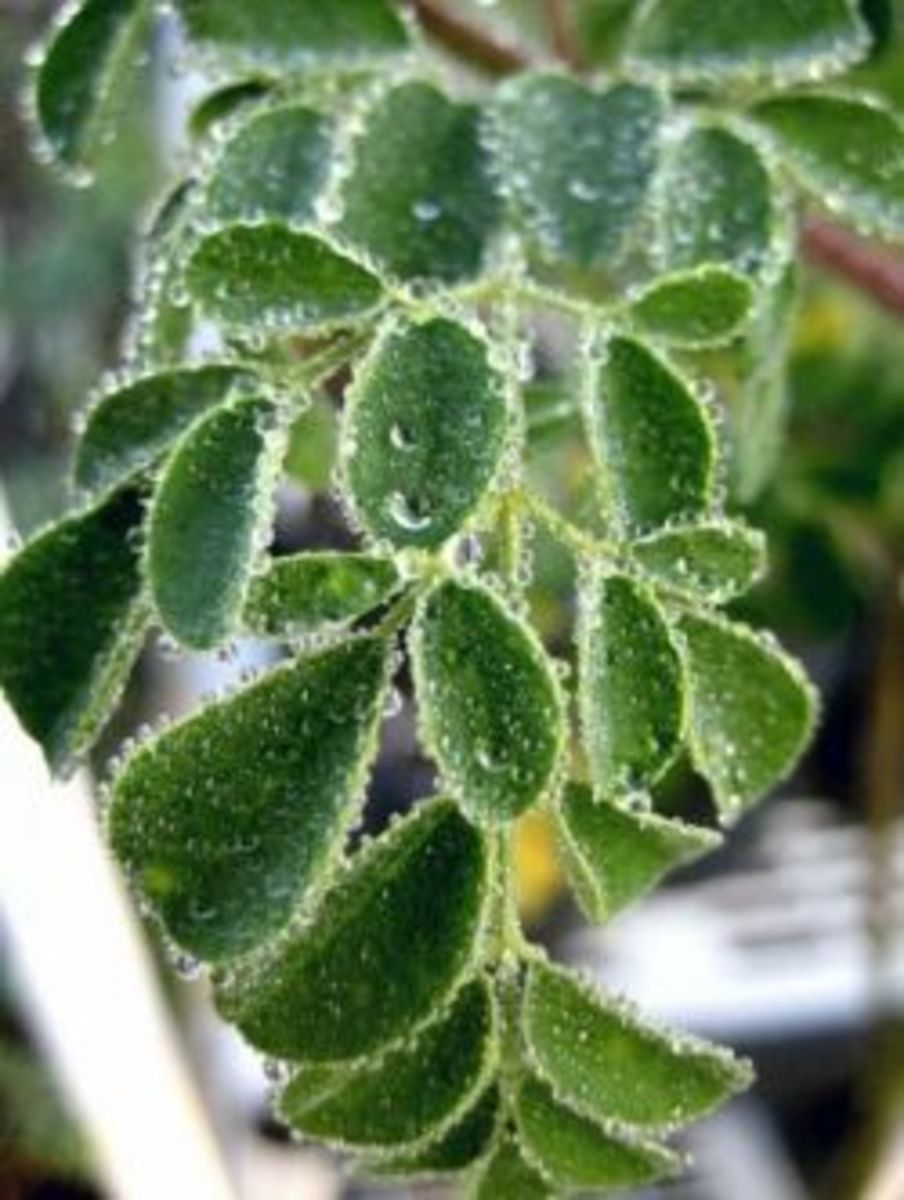Minnesota Horticulture: Indoor Plants - How to Have a Green Thumb
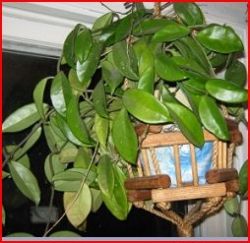
The Wax Plant, which I call the Hoya
One of my plants is called the Wax Plant or Hoya. It produces clusters of tiny pink flowers and then it drops them. The plant is one that must be rootbound before it produces any blooms.
My plant is almost ten years old and I started it from a single cutting. It was almost seven years old before I saw my first cluster of blooms.
I was ELATED!
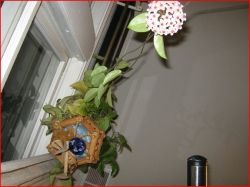
The HOYA blossom
from below...
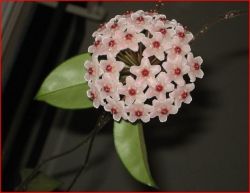
the Blooms...
up close..

Rooting a Cutting
I inherited the Encyclopedia of Gardening series from my grandmother, who had passed it down through my mother. The series is old, but the facts have not changed about what you need to know about the various plants that people tend to grow in their houses.
Some plants are very easy to start growing. If you have a friend who has a houseplant growing, generally, all you need is a cut leaf, and let it stand in a glass of water until it produces roots, then place it in a small pot of dirt.
Placing a cut piece of plant into a glass of water is called rooting a cutting. You keep it in there in a light area until you see roots forming on the stem.
Planting Your Cutting
Tips for planting:
- start with small pot
- put some rocks in the bottom of the pot - water pools in the bottom of the pot as it drains, so the rocks keep the roots from drowning in the water
- place your cutting in the pot, root side down
- fill dirt around the cutting
- slowly add water to the pot until the water comes out the bottom of the pot.
- wait until the soil feels dry to the touch before you add water again
Then, you plant the cutting in a container that is small, but large enough to cover the root system without bending and has enough drainage to keep the roots from sitting in water, directly.
Once you place your rocks in the bottom of your pot, put your plant in the container and fill it with potting soil, you must put enough water on the dirt to get it wet.
Then, you let it sit until the soil feels dry. Then, add a small amount of water to wet the top of the soil. Usually, about a 1/2 cup of water. It is helpful to collect natural water. Our air conditioner expels water and the water may be good for plants. At one time, I had forty plants in my house, all from rooted cuttings.
Transplanting to a New Pot
At some point, your small pot will be too small for your new plant. You will need to find a pot that is at least an inch bigger than the small pot.
In essence, you will place new rocks in the bottom of the new pot. You will place a small amount of potting soil on top of the rocks.
Then, carefully remove the plant, and its dirt from the smaller pot and place this rooted plant, root side down in the center of the new, larger pot.
Fill around the plant with new dirt. Add water until it comes out the bottom and then, wait until the soil is dry to add more.
When you purchase a potted plant from a green house, be sure to save your old pots. You can reuse them when you have newly rooted cuttings.
The secret of transplanting is that you should never increase your pot size by more than one inch per transplant. What do I mean by this information?
If you start a plant in a four inch pot, you should transplant the plant into a five inch pot. That one inch increase may seem like a waste of time to you, but the plant roots will appreciate it.
Let's discuss transplanting for a moment.
Transplanting is the action of moving a plant to a larger pot. This is what I know and believe to be true about transplanting: You need to get a pot that is bigger than the pot you have the plant in currently. Some say that you should get a pot that is an inch bigger than the previous. To transplant in small increments. This could well be based on the fact that when you hold the plant while you fill in the dirt, it is nice to be able to hold the plant centered in the new pot, so this makes for a quick aid for determining size of new pot. If you can hold onto the rootball/dirt of the plant while you put dirt in the new pot, the new pot is generally the correct size.
The Steps to Transplant
Click thumbnail to view full-size








Growing a Mango
Click thumbnail to view full-size


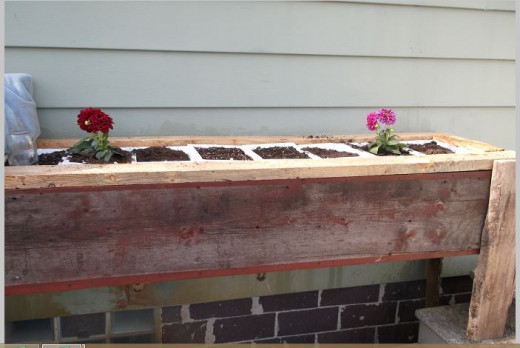
Flower box that I built
This flowerbox was built from lumber that I found around my yard. We had some boards that were removed from a wooden barn before it was demolished. The rest of the wood was some from an Ash tree that fell in the yard. We have access to a sawmill. The wood was originally earmarked for an upcoming shed project, but the wood has dried out and is of more use as a decorative wood than a construction timber.
My Smaller House Plants in a North Window
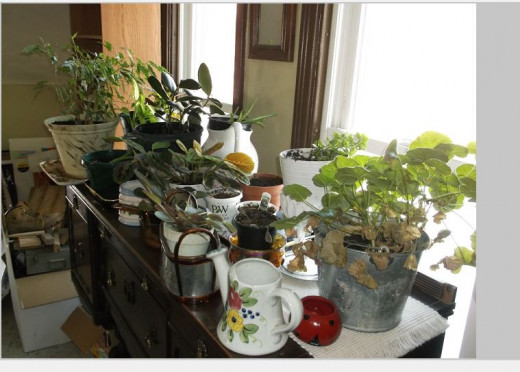
My Hangng Plants in a North Window
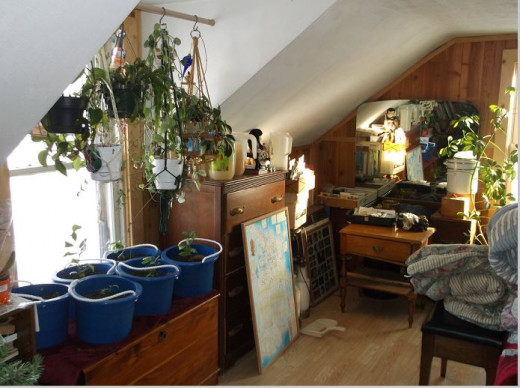
My Large Plants in a East Window
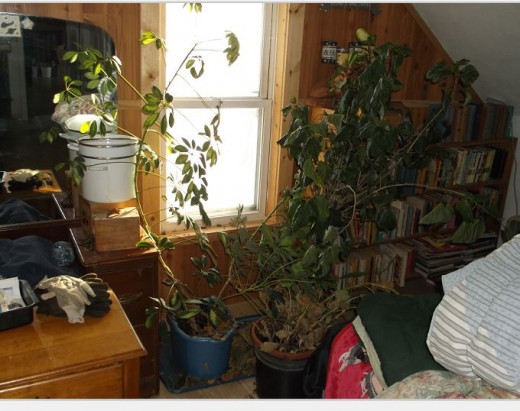
Light
I have the smaller plants by a north window. They don't seem to grow the best, but at least they have light. I have African Violets, aloe vera, ficus, rubber plant, geranium and some miscellaneous folliage plants.
I water them once a week. We have hard water which has a high iron content. It's orange.
Light
The hoya, christmas cactus, philodendron and posthos, orchids, lemon and lime trees and fern live by the North Window. The hibiscus, diffenbachia, geranium and one other plant that I am not certain what it is, live by the East Window.

